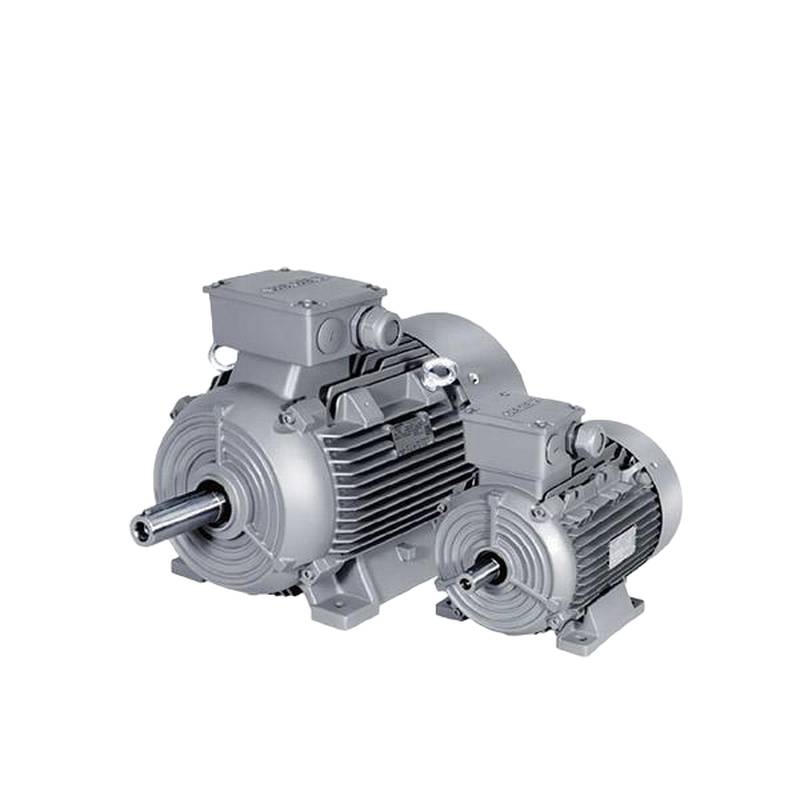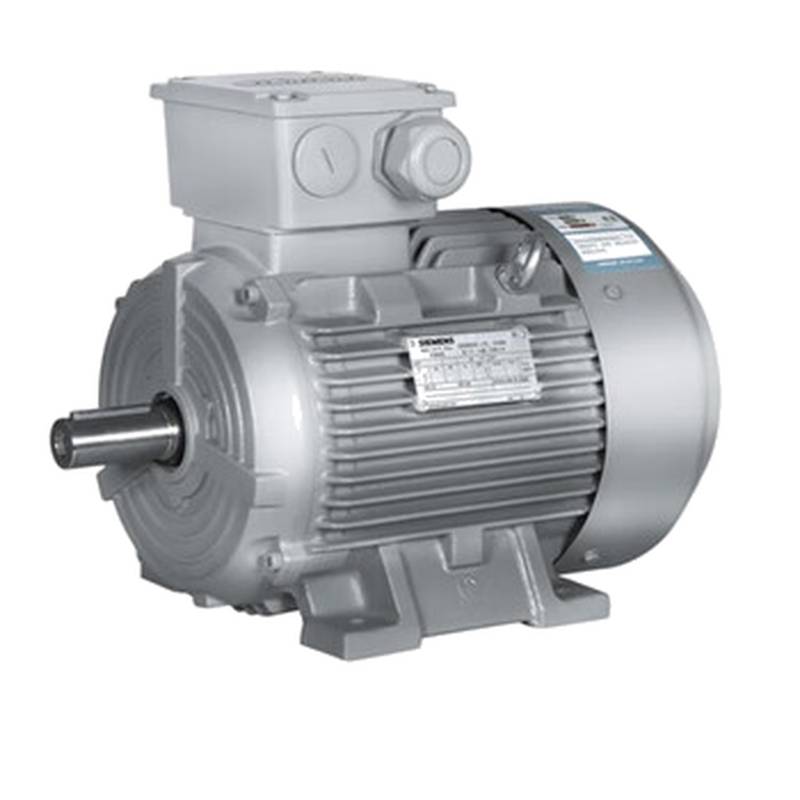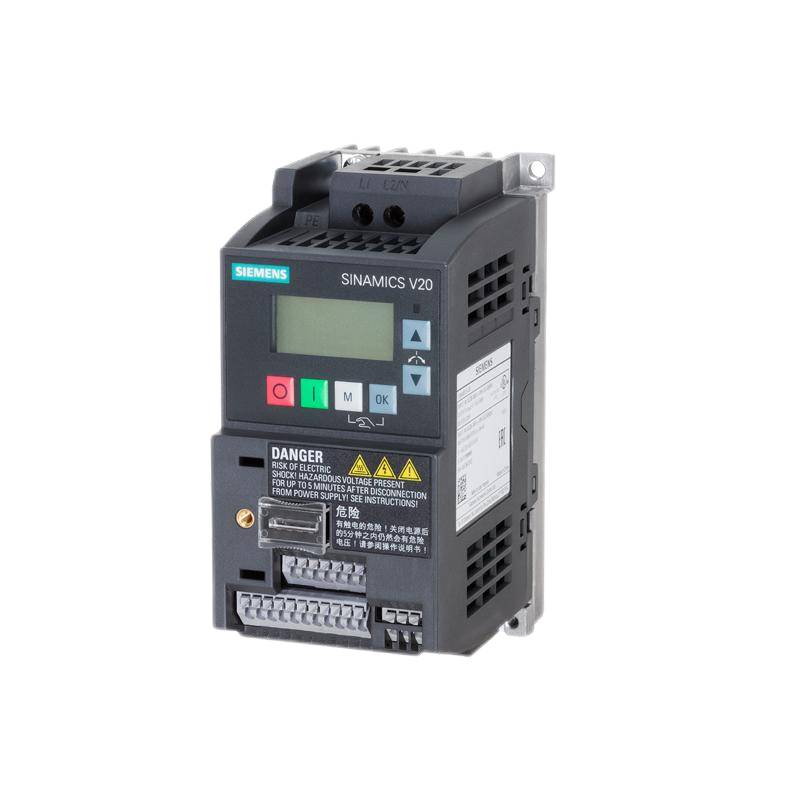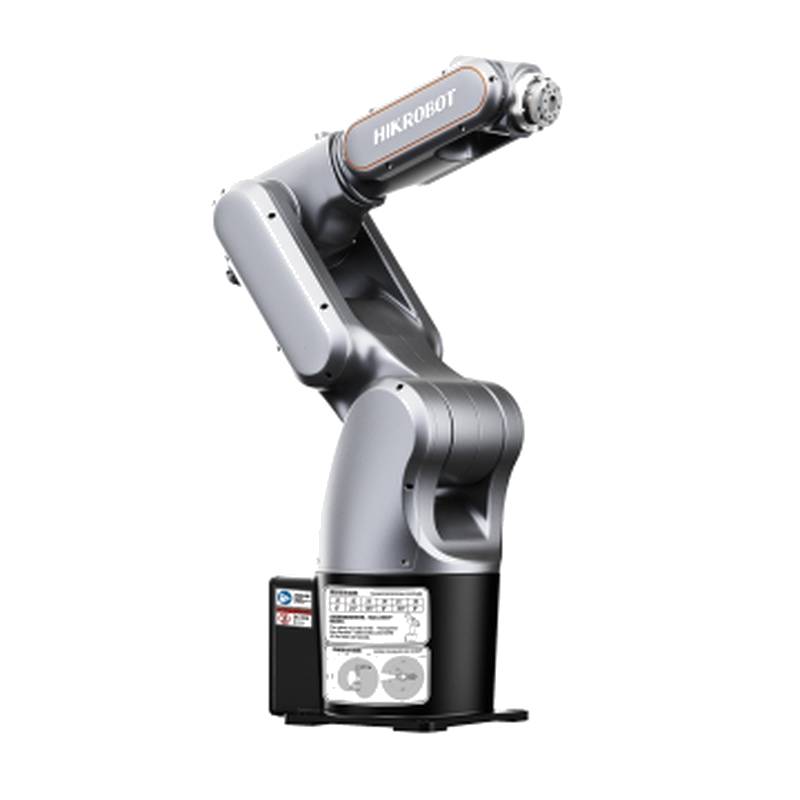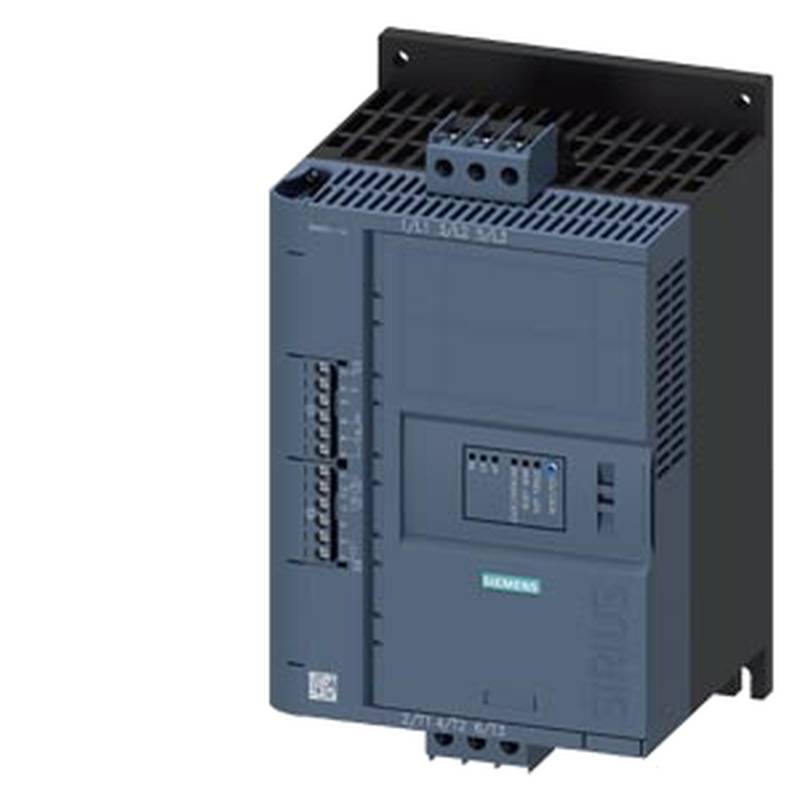
The Delta ECM-E3M-EA1320RSE High Precision Servo System is engineered for demanding industrial automation tasks, offering exceptional performance, reliability, and advanced control capabilities. This system excels in applications requiring precise motion control, rapid response times, and robust operation. Its core advantages lie in its high-resolution feedback, superior torque control, and seamless integration within automated manufacturing environments. Key technical parameters include an input voltage range of 170-264 VAC, a rated output current of 20A, and a maximum output current of 50A, ensuring ample power for dynamic movements. The system boasts a high-speed communication interface, supporting protocols like EtherNet/IP, making it adaptable to various industrial networks. Its compact design further facilitates installation in space-constrained applications, while its advanced thermal management ensures sustained performance under heavy loads.
Product Specifications
| Feature | Specification |
| :--------------------- | :------------------------------------------------- |
| Model Number | ECM-E3M-EA1320RSE |
| Input Voltage | 170-264 VAC |
| Rated Output Current | 20A |
| Maximum Output Current | 50A |
| Communication Interface| EtherNet/IP, Modbus TCP, RS-485 |
| Encoder Resolution | 17-bit Incremental, 20-bit Absolute (Optional) |
| Torque Control | ±0.01% torque ripple, 100% rated torque at 0 speed |
| Operating Temperature | 0°C to 55°C |
| Storage Temperature | -20°C to 65°C |
| Vibration Resistance | 5.9 m/s² (59 Hz, 15 minutes) |
| Dimensions (W x H x D) | 150mm x 280mm x 230mm |
Core Features & Market Positioning
The Delta ECM-E3M-EA1320RSE distinguishes itself through its sophisticated motion control algorithms, offering precise positioning and velocity control essential for high-accuracy machinery. Its advanced current loop control minimizes torque ripple, resulting in smoother motor operation and reduced mechanical stress. This servo system is positioned as a premium solution for industries demanding uncompromising precision, such as semiconductor manufacturing, robotics, and advanced packaging. Compared to competitors, the ECM-E3M series offers a superior balance of performance, connectivity, and ease of integration. The system's built-in auto-tuning functions simplify setup, reducing commissioning time and costs for system integrators. Its robust design and comprehensive fault diagnostics contribute to high operational uptime, a critical factor in continuous production environments.
Key Application Scenarios
This high-precision servo system is ideally suited for a wide array of industrial automation applications. It provides the necessary control for complex pick-and-place operations in robotic arms, ensuring rapid and accurate object manipulation. In CNC machining centers, the ECM-E3M-EA1320RSE enables ultra-precise toolpath execution, leading to enhanced part quality and reduced cycle times. It is also a critical component in automated assembly lines, where synchronized multi-axis movements are required for efficient and reliable production. Furthermore, its high-speed communication capabilities make it an excellent choice for applications involving automated guided vehicles (AGVs) and sophisticated motion control in printing and packaging machinery.
Practical System Integration Guidance
Integrating the Delta ECM-E3M-EA1320RSE servo system into existing automation architectures is streamlined due to its versatile communication options. Wiring involves connecting the power supply (170-264 VAC), motor, and feedback encoder according to the provided schematics. For EtherNet/IP communication, standard industrial Ethernet cables are used, connecting the servo drive to the network switch or controller. Commissioning typically involves using Delta's DeltaBISOFT software to configure motor parameters, set motion profiles, and perform auto-tuning. Basic programming examples within PLCs often involve cyclic data exchange for position, velocity, and torque commands, along with status monitoring. The system supports various encoder types, requiring correct selection and connection for optimal performance.
Operation and Risk Mitigation
Safe operation of the Delta ECM-E3M-EA1320RSE servo system mandates adherence to electrical safety standards and proper grounding procedures. Always ensure the system is powered down before making any wiring changes. Key operational considerations include monitoring motor temperature and load to prevent overheating and potential damage. Common troubleshooting scenarios involve checking power supply stability, motor connection integrity, and encoder signal validity. Critical fault codes, such as "Overcurrent Fault" (F01) or "Encoder Error" (F15), indicate specific issues requiring prompt attention, often detailed in the user manual for detailed resolution steps. Regular maintenance, including cleaning ventilation openings and verifying cable connections, contributes to long-term reliability.
Scalability & Long-Term Value
The Delta ECM-E3M-EA1320RSE servo system offers significant scalability, allowing for expansion of multi-axis configurations by adding identical or compatible Delta servo drives. Its open-architecture communication protocols ensure compatibility with a wide range of PLCs and HMI systems from various manufacturers, facilitating integration into existing or future automation platforms. For advanced applications, the system can be integrated into Industrial Internet of Things (IIoT) frameworks, enabling remote monitoring, predictive maintenance, and data-driven optimization through platforms like Delta's DIACloud. This forward-looking design ensures that investments in this servo system provide lasting value and adaptability to evolving manufacturing demands.
Frequently Asked Questions
1. What are the primary advantages of the Delta ECM-E3M-EA1320RSE servo system?
This system offers exceptional precision and responsiveness for critical motion control tasks. Its robust torque control ensures smooth operation even at low speeds. The advanced communication options enable seamless integration into diverse automation networks.
Its high-speed feedback capabilities allow for rapid and accurate positioning, vital for complex machine operations. The integrated auto-tuning functions significantly reduce setup time and complexity for engineers.
The system's compact design and efficient thermal management contribute to reliable, long-term performance in demanding industrial environments. This combination of features makes it a superior choice for high-performance applications.
2. How does the Delta ECM-E3M-EA1320RSE handle overload conditions?
The servo system incorporates sophisticated protection mechanisms to manage overload situations effectively. It features a rated output current of 20A and a peak capability of 50A for transient demands.
During overload, the drive monitors current and temperature, initiating protective actions to prevent damage to the motor or itself. This might involve limiting current or triggering a fault if thresholds are exceeded.
Users should consult the system's fault code list for specific overload-related error notifications, such as "Overcurrent" or "Motor Overload," to diagnose and resolve the issue promptly.
3. What are the key communication protocols supported by this servo system?
The ECM-E3M-EA1320RSE supports multiple industrial communication protocols for flexible integration. It is equipped with EtherNet/IP for high-speed, real-time industrial networking.
Additionally, it offers Modbus TCP for robust network communication and RS-485 for serial device connectivity. These options ensure compatibility with a wide range of PLCs and HMI systems.
This multi-protocol support allows engineers to select the most appropriate communication method based on network infrastructure, performance requirements, and existing equipment.
4. Can the Delta ECM-E3M-EA1320RSE be used with different types of motors?
While primarily designed for use with Delta servo motors, the system can often be configured to operate with other compatible brushless servo motors. The key is matching motor characteristics like voltage, current, and encoder feedback to the servo drive's capabilities.
Users must carefully match the motor's specifications to the ECM-E3M-EA1320RSE's ratings and configure the servo drive's parameters accordingly. This typically involves setting motor poles, rated current, and encoder resolution within the drive's software.
Incorrect motor-drive matching can lead to poor performance, instability, or potential damage. Always refer to both the motor and servo drive manuals for detailed compatibility information and configuration guidance.
5. What is the typical power supply requirement for this servo system?
The Delta ECM-E3M-EA1320RSE operates on a standard industrial input voltage range. It is designed to accept an AC power supply between 170 and 264 volts.
This voltage range is common in single-phase and some three-phase industrial power distribution systems, making it adaptable to many factory environments. Ensure your power source is stable and within these limits for optimal performance.
Proper grounding and surge protection are also essential for reliable operation and to safeguard the servo system from voltage fluctuations or electrical disturbances.
6. How is the encoder resolution specified for this system?
The encoder resolution is a critical parameter for achieving high-precision motion control. The ECM-E3M-EA1320RSE offers high-resolution feedback for accurate positioning.
It typically comes with a standard 17-bit incremental encoder, providing a high degree of granularity for motion feedback. Optional absolute encoders with 20-bit resolution are also available for applications requiring position retention upon power loss.
The selected encoder type and resolution directly impact the system's accuracy, smoothness of motion, and ability to perform complex interpolation tasks.
7. What software is used for configuring and commissioning the Delta ECM-E3M-EA1320RSE?
Delta provides dedicated software for the setup and management of its servo systems. The DeltaBISOFT software suite is the primary tool for configuring the ECM-E3M-EA1320RSE.
This software allows engineers to perform crucial tasks such as setting motor parameters, defining motion profiles, executing auto-tuning routines, and diagnosing system status. It offers a user-friendly interface for these complex operations.
Access to the DeltaBISOFT software and associated documentation is essential for efficient commissioning, parameter optimization, and troubleshooting of the servo system.
8. How can I ensure safe installation and operation of this servo system?
Safety during installation and operation is paramount. Always ensure the main power supply to the servo drive is disconnected before performing any wiring or maintenance tasks.
Proper grounding of the servo drive, motor, and associated equipment is critical to prevent electrical hazards and electromagnetic interference. Follow the wiring diagrams in the manual meticulously.
Familiarize yourself with the system's fault codes and emergency stop procedures. Regularly inspect wiring and connections for any signs of wear or damage.
9. What are the typical applications where this high-precision servo system excels?
This servo system is ideal for precision-critical industrial automation tasks. It is commonly used in robotic end-effectors for precise manipulation and assembly.
Applications in semiconductor manufacturing, such as wafer handling and inspection, benefit from its high accuracy and repeatability. It's also crucial for high-speed, precise movements in medical device manufacturing and advanced packaging machinery.
The system's ability to deliver smooth, controlled motion at high speeds makes it suitable for applications like precision grinding, laser cutting, and high-resolution 3D printing.
10. Does the Delta ECM-E3M-EA1320RSE support integration with IIoT platforms?
Yes, the system is designed with future-proofing in mind and supports integration with Industrial Internet of Things (IIoT) platforms. Its robust communication capabilities are key to this.
Through protocols like EtherNet/IP and Modbus TCP, data from the servo system can be transmitted to cloud-based platforms or SCADA systems. This enables remote monitoring, performance analysis, and predictive maintenance strategies.
Integration with IIoT solutions allows for greater operational visibility, data-driven optimization of processes, and proactive identification of potential issues, thereby enhancing overall manufacturing efficiency.


















